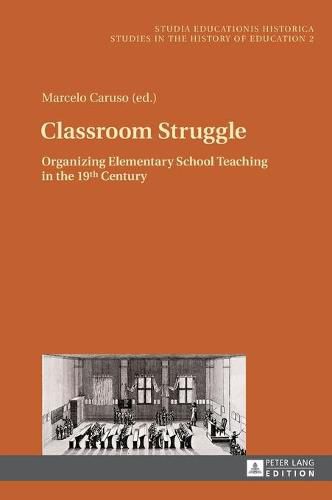Readings Newsletter
Become a Readings Member to make your shopping experience even easier.
Sign in or sign up for free!
You’re not far away from qualifying for FREE standard shipping within Australia
You’ve qualified for FREE standard shipping within Australia
The cart is loading…






This title is printed to order. This book may have been self-published. If so, we cannot guarantee the quality of the content. In the main most books will have gone through the editing process however some may not. We therefore suggest that you be aware of this before ordering this book. If in doubt check either the author or publisher’s details as we are unable to accept any returns unless they are faulty. Please contact us if you have any questions.
During the institutionalization of mass schooling in the 19th century, teaching large groups of children became both a necessity and a matter of regulation. For officials and inspectors the systematization of classroom interactions was important for effective results. However, while systematization could bring about the constant attention of children and their uninterrupted work, interactions themselves were difficult to control. Rationalized models of classroom organization provided alternatives for managing large groups before age grading became the dominant pattern of organizing interactions. The contributions in this volume explore diverse paths of transition towards modern classroom organization in different countries, allowing transnational perspectives and comparisons.
$9.00 standard shipping within Australia
FREE standard shipping within Australia for orders over $100.00
Express & International shipping calculated at checkout
This title is printed to order. This book may have been self-published. If so, we cannot guarantee the quality of the content. In the main most books will have gone through the editing process however some may not. We therefore suggest that you be aware of this before ordering this book. If in doubt check either the author or publisher’s details as we are unable to accept any returns unless they are faulty. Please contact us if you have any questions.
During the institutionalization of mass schooling in the 19th century, teaching large groups of children became both a necessity and a matter of regulation. For officials and inspectors the systematization of classroom interactions was important for effective results. However, while systematization could bring about the constant attention of children and their uninterrupted work, interactions themselves were difficult to control. Rationalized models of classroom organization provided alternatives for managing large groups before age grading became the dominant pattern of organizing interactions. The contributions in this volume explore diverse paths of transition towards modern classroom organization in different countries, allowing transnational perspectives and comparisons.